► Classic Bentley, conversions join Rolls-Royce, Range and Jaguar
► Old-school cool meets cutting-edge tech
► One of the rarest EVs ever converted
Lunaz Design is at it again. This time the company has upcycled one of the rarest cars ever to be electrified; a 1962 Bentley S2 Continental. Only four were ever made, and this one has traded in its 6.2-litre V8 (which sounds quite nice, to be honest) for an electric powertrain.
‘This magnificent Bentley S2 Continental was already an exceptional motor car, as one of just a few examples of its type that remain in the world. In its new guise, it’s the rarest vehicle ever to be converted to fully electric propulsion,’ said David Lorenz, founder of Lunaz.
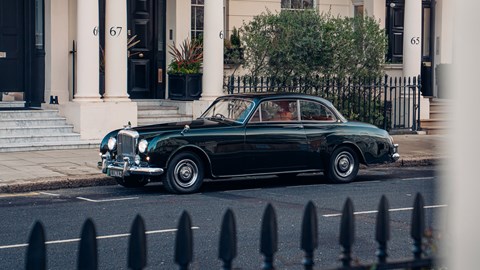
‘It’s the most exclusive project we’ve ever undertaken at Lunaz Design: it’s literally one of a kind. This car is also a further demonstration of our proven upcycling process and technologies, developed entirely in-house at our Silverstone facility, which are fast becoming the de facto gold standard for electrification projects involving the world’s most prestigious marques.’
What’s the story?
It’s not clear why this car was chosen for such a drastic refit, but it has significantly better performance than before. Lunaz engineers began with a detailed inspection of the car, followed by a scan to create a CAD model of the car, and any tweaks to accommodate the new powertrain were identified and designed from there.
From there it was a matter of stripping down the car, and then rebuilding it with Lunaz’s modular powertrain. According to Lunaz, this modular design meant that engineers could ‘adjust individual components to perfectly reflect the car’s innate character, and the owner’s personal preferences.’
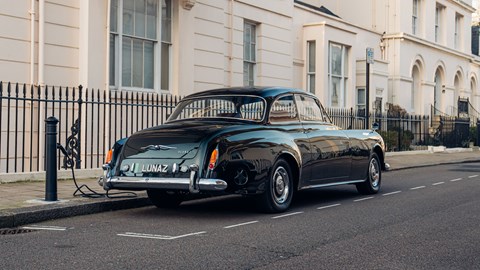
There’s been a kick in performance as a result. The Bentley’s new 400bhp powertrain will launch it to 0-62mph in a nice 6.9 seconds, and it also benefits from 530lb ft of torque. To accommodate the power and extra weight of battery cells, the Frankenstein Continental now rolls on a fully adjustable coil-spring suspension, and also uses six-piston stoppers on the front, and four-piston units at the rear axle.
There’s no details on price, but that’s probably for the best; the firm’s latest Land Rover conversion was £245,000.
What else has Lunaz done?
Having started building the world’s first electric classic Rolls-Royces for those who want timeless style mixed with the latest electrified powertrains, it’s now offering what it claims is the world’s first fully electric SUV. A fully restored, electrified and retrimmed original Range Rover is available from £245,000 – plus taxes, of course.
Like the Rolls Royce range, you can pick from four-doors, with long wheelbase optional, two-doors and even a convertible.
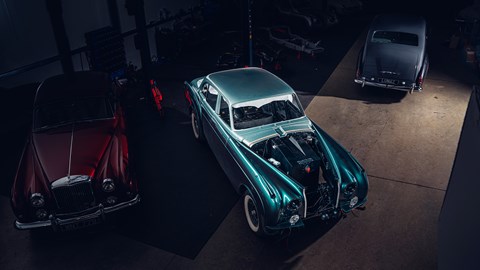
Best EVs: our guide to the best electric cars
Electric Range Rover: sensible luxury?
It’s not exactly a ground-breaking price that’ll transform the market, but for £245,000 a fully restored, electrically-powered Range Rover is Lunaz’s most rational product yet.
Not only is the original Range Rover a trendsetting legend that established a template for what many consider to be the epitome of luxury cars now – height and dominance over the road and countryside alike – it’s a great model for sustainable motoring, with lightweight aluminium panels, a bolt-on approach to maintenance and proven track record of repairability and accessibility that classic Rolls-Royce and Bentley models lack.
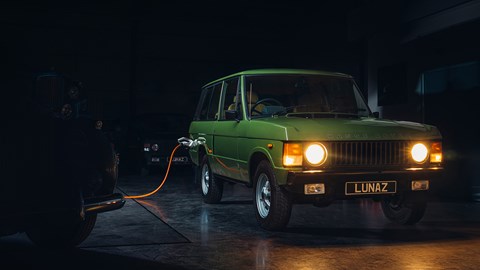
It’s also not that unrealistic a price, given the values of even ropey Range Rovers are heading skyward and a full nut and bolt restoration isn’t a cheap undertaking – even without the EV conversion. Better yet, you can hope that the donor cars are mopping up the unloved and unwanted, rather than the cherished and rare.
A good example of that is the Safari Top. Rather than seeking out rare converted open-rop Range Rovers to electrify, Lunaz is converting models from standard hard-top bodies to create the desired open-air experience. The first one has already sold…
Is it still the best 4x4x… how far again?
Good question – the Lunaz Range Rover comes in two flavours, ‘Town’, and ‘Country’. Town represents something Range Rover never built itself – a two-wheel drive, passenger-focused experience with luxurious rear seating (choose the long wheelbase) and the option to really go to, er, town on the luxury appointments. Simplifying the drivetrain helps range, of course, but it also reflects the anticipated use of these as a city-centric vehicle.
The Country model offers all the benefits of a classic Range Rover, with a rebuilt – but authentic – four-wheel drive system on the single-motor model, or a motor per axle on the twin-motor setup. Details have yet to be released around performance, but we can assume it’ll be quick, tractable and capable off-road given the original drivetrain beyond the motor isn’t being altered significantly. Anti roll bars improve the handling.
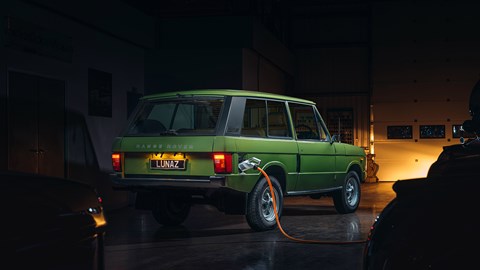
Unlike the monster packs in the Rolls-Royce conversions below, the Range Rover can be specified with 60kWh or 90kWh packs; these should give a potential for around 200 miles given the relatively light – by modern standards – construction of the Range Rover; at least before too many lavish options have been added.
Customers have a great deal of flexibility – including the aforementioned Safari conversion – but Lunaz is aware of the many details and diversions that exist within the Range Rover’s evolution.
We’re assured that any upgrades will be sympathetic; if you’ve a hankering for 1970s simplicity or the refinement of the last soft-dash luxury, speak to Lunaz. Conversions on your own Range Rover are available too (as with the other classic cars Lunaz has worked with) but as part of a bare-metal restoration, the saving for providing your own is probably quite small.
Greater demand than ever for electric classic cars
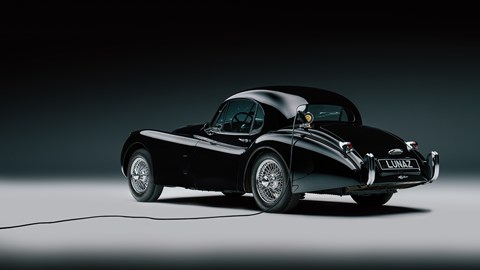
Even in challenging economic circumstances, Lunaz is finding demand for converted, restored classics is growing – with a younger demographic finding the appeal of artistic, legendary styling with modern powertrains rather more alluring than the oily-rag enthusiasm of old.
As such, the workforce at Silverstone has doubled to meet capacity as an ever-more sophisticated process allows a wider range of classic cars to be converted using a blend of traditional coachbuilding techniques and F1-developed powertrain and chassis improvements. Demand for export is high as cities around the world turn to excluding ICE vehicles – classics included – to drive down local emissions.
Electric classic Rolls-Royces: how Lunaz converts them
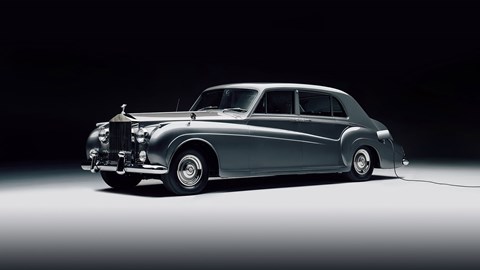
First, suitable examples are sourced and given a ground-up restoration. Out go the period petrol motors (sigh…) and in comes Lunaz’s proprietary EV powertrain.
That means a substantial 120kWh lithium-ion battery pack for the Phantom (claimed to be the largest cell of its type in production), which is enough for a claimed 300+ mile range. The Silver Cloud models make do with a smaller 80kWh energy pack, which interestingly carries a similar range claim.
How much does it cost to charge an electric car?
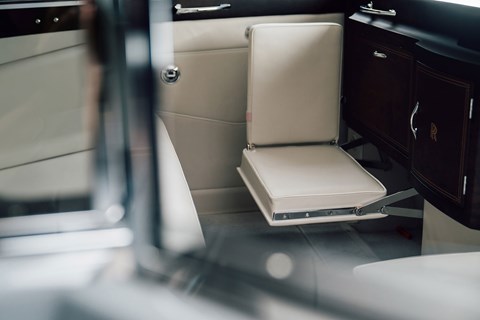
Period details are retained throughout, although Lunaz will upgrade details like the Bakelite telephone between the rear seats with modern cellular technology. Sounds pretty cool to us – and clients can influence the design and personalisation to a high degree, as you’d expect at this lofty price.
Lunaz founder David Lorenz said: ‘The time is right for an electric Rolls-Royce. We are answering the need to marry beautiful classic design with the usability, reliability and sustainability of an electric powertrain. More than ever we are meeting demand for clean-air expressions of the most beautiful and luxurious cars in history. We are proud to make a classic Rolls-Royce relevant to a new generation.’
Prices for the Silver Cloud start at £350,000 (plus local taxes), whereas the Phantom models start at a cool £500,000.